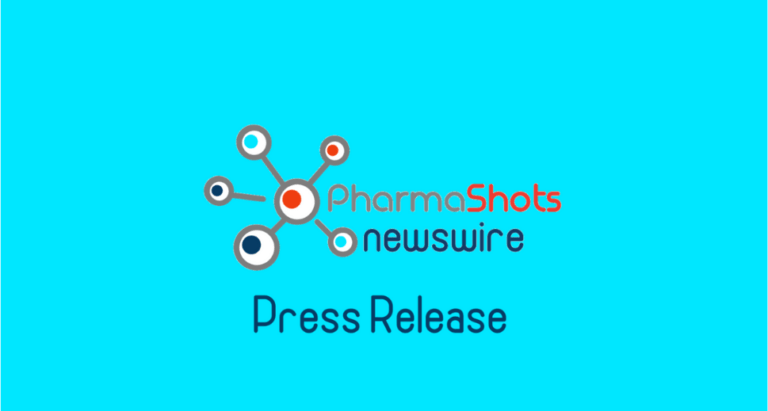Bristol Myers Squibb Announces Topline Results from Phase 3 ARISE Trial Evaluating Cobenfy (xanomeline and trospium chloride) as an Adjunctive Treatment to Atypical Antipsychotics in Adults w
Apr 22, 2025
Cobenfy as an adjunctive treatment to atypical antipsychotics did not reach the threshold for a statistically significant difference compared to placebo with an atypical antipsychotic for the primary endpoint of the change from baseline to Week 6 in the Positive and Negative Syndrome Scale (PANSS) total score
Treatment with Cobenfy and an atypical antipsychotic showed a numerical improvement compared to treatment with placebo and an atypical antipsychotic
Cobenfy’s safety and tolerability profile as an adjunctive therapy was consistent with previous monotherapy trials
PRINCETON, N.J.--(BUSINESS WIRE)--Bristol Myers Squibb (NYSE: BMY) today announced topline results from the Phase 3 ARISE trial evaluating the efficacy and safety of Cobenfy (xanomeline and trospium chloride) as an adjunctive treatment to atypical antipsychotics in adults with inadequately controlled symptoms of schizophrenia. In the Phase 3 trial, adjunctive Cobenfy treatment demonstrated a 2.0-point reduction in the Positive and Negative Syndrome Scale (PANSS) total score compared to placebo with an atypical antipsychotic at Week 6, which did not reach the threshold for statistical significance for the primary endpoint (P = 0.11). Preliminary analyses suggest that Cobenfy as an adjunctive treatment to an atypical antipsychotic was associated with improvements in symptoms of schizophrenia compared to placebo plus an atypical antipsychotic for certain patients. In a post-hoc subgroup analysis there was a notable difference in response between subjects treated with risperidone as a background therapy compared with the remaining subjects treated with other background antipsychotics (non-risperidone). The initial analyses showed:
|
PANSS, PSP and CGI-S Change from Baseline by Treatment Group |
|||||
|
|
Endpoint |
Cobenfy + APD |
Placebo + APD |
LSMD |
p-value |
|
mITT Population, N |
190 |
196 |
|
||
|
Primary |
Change in PANSS |
-14.3
(1.01) |
-12.2
(0.98) |
-2.0 (-4.5, 0.5) |
0.11 |
|
Key Secondary |
Change in PSP Score |
5.3 (0.75) |
5.9 (0.73) |
-0.6 (-2.4, 1.2) |
0.52* |
|
Secondary |
Change in CGI-S |
-0.6 (0.06) |
-0.5 (0.06) |
-0.1 (-0.3, 0.04) |
0.14* |
|
Post-Hoc Subgroup Analysis |
|||||
|
Risperidone |
Change in PANSS |
(N=60) -11.3
(2.13) |
(N=69) -12.3
(2.10) |
1.1 (-3.7, 5.9) |
0.66* |
|
Non-Risperidone |
Change in PANSS |
(N=130) -15.1
(1.18) |
(N=127) -11.7
(1.17) |
-3.4 (-6.3, -0.5) |
0.03* |
|
APD = Antipsychotic background drug; PANSS = Positive and Negative Syndrome Scale; PSP = Personal and Social Performance Scale; CGI-S = Clinical Global Impressions Severity Scale; mITT = modified intent-to-treat; SE = Standard Error; LSMD = Least Squares Mean Difference; Non-Risperidone group includes paliperidone, aripiprazole, ziprasidone, lurasidone and cariprazine. |
|
*p-value is nominal, not adjusted for multiplicity |
Cobenfy’s safety and tolerability profile as an adjunctive treatment was consistent with previous monotherapy trials.
Further analysis will follow, and the company will plan to speak with regulators about potential next steps.
"Adjunctive treatment trials in schizophrenia present significant clinical and methodological challenges," said Husseini Manji, MD, FRCPC, Co-Chair, UK Government Mental Health Goals Program and Professor, Department of Psychiatry, Oxford University. "When patients are already receiving treatment, demonstrating additional statistical benefit becomes inherently more difficult. However, it’s common for individuals to continue to experience persistent symptoms, and prescribers have adopted an approach to address this significant unmet need through adjunctive use. Although Cobenfy did not demonstrate a statistically significant improvement as an adjunctive treatment in this trial, the data are encouraging, showing a noteworthy improvement for the majority of patients in the trial, as well as a tolerable safety profile. These findings warrant additional follow up and may provide valuable direction in our ongoing search for complementary approaches to address these persistent treatment gaps."
"Historically, the development of an effective, adjunctive treatment for schizophrenia has been difficult due to inherent challenges like variable patient response, stringent trial design requirements, and the complexities of demonstrating incremental benefits beyond established antipsychotics," said Samit Hirawat, MD, executive vice president, chief medical officer and head of development at Bristol Myers Squibb. "Despite the complex and challenging nature of adjunctive studies, we wanted to pursue research in this area to help more patients struggling with this condition. While the primary endpoint in this trial did not meet statistical significance, we need to complete our analysis and will plan to engage with the medical community and regulators to discuss these results and potential next steps. Cobenfy monotherapy has shown positive efficacy and safety in four pivotal studies, and provides a meaningful, differentiated treatment for people living with schizophrenia.”
There is a robust clinical development program advancing for this important medicine across multiple neuropsychiatric conditions, including symptoms associated with Alzheimer's disease and autism spectrum disorder, bipolar disorder and other areas of significant clinical need.
Bristol Myers Squibb will complete a full evaluation of the Phase 3 trial data and intends to present detailed results at an upcoming medical conference.
Bristol Myers Squibb thanks the patients, investigators and clinical trial sites who participated in the ARISE clinical trial.
About the Phase 3 ARISE Trial
The ARISE clinical trial (KAR-012) is a Phase 3, 6-week, randomized, double-blind, placebo-controlled, multicenter, outpatient study evaluating Cobenfy (xanomeline and trospium chloride) as an adjunctive treatment in adults with schizophrenia who have inadequate response to their current antipsychotic treatment. The trial enrolled adults aged 18 to 65 years with schizophrenia who were on stable background therapy at the time of enrollment, with a Positive and Negative Syndrome Scale (PANSS) score of ≥70 at screening and randomization. The primary objective is to assess the efficacy of Cobenfy as an adjunctive treatment to one of several atypical antipsychotics compared to placebo with an atypical antipsychotic as measured by change from baseline in PANSS total score at Week 6. The study also evaluated several secondary endpoints, including changes in Personal Social Performance (PSP), Clinical Global Impression-Severity (CGI-S), PANSS Marder Positive and Negative symptom factor scores, categorical response (defined as the proportion of subjects achieving ≥30% improvement in PANSS total score at Week 6), and Preference of Medication (POM).
Following completion of the ARISE study, eligible participants may continue in a 52-week open-label extension (OLE) study to evaluate the long-term safety and tolerability of adjunctive Cobenfy treatment.
About Schizophrenia
Schizophrenia is a persistent and often disabling mental illness impacting how a person thinks, feels and behaves. There are three symptom domains of schizophrenia, which include positive symptoms (e.g., hallucinations, delusions, disordered thinking and speech), negative symptoms (e.g., lack of motivation, lack of emotional expression/flat affect, social withdrawal) and cognitive dysfunction (e.g., impaired attention, deficits in memory, concentration and decision-making). The symptoms of schizophrenia can affect all areas of people’s lives, making it difficult to maintain employment, live independently and manage relationships. Schizophrenia affects nearly 24 million people worldwide, including 2.8 million people in the United States, and is one of the top 15 leading causes of disability worldwide.
Bristol Myers Squibb: Transformational Research Advancing Neuroscience
Bristol Myers Squibb is inspired by a single vision – transforming patients’ lives through science. Neurological and neuropsychiatric conditions represent some of the greatest challenges of our time, bringing life-altering hardships to patients, caregivers and families throughout the course of these devastating diseases. Our researchers are committed to the pursuit of breakthrough science to develop life-changing medicines that modify disease and treat symptoms to improve quality of life. We have established a diverse neuroscience portfolio, including assets across a wide range of therapeutic modalities and mechanisms in conditions such as Alzheimer’s disease, schizophrenia, multiple sclerosis and more. With industry-leading capabilities, including our in-house neuroimaging program, we seek bold solutions to improve the treatment landscape. Evolution is in our DNA at Bristol Myers Squibb. We are motivated by the rapid progress of scientific knowledge within neuroscience and have an unwavering commitment to advance the most promising innovations to deliver transformational results for patients.
About Cobenfy™ (xanomeline and trospium chloride)
Cobenfy™ (xanomeline and trospium chloride), formerly KarXT, is an oral medication for the treatment of schizophrenia in adults. Cobenfy combines xanomeline, a dual M1- and M4-preferring muscarinic receptor agonist, with trospium chloride, a muscarinic receptor antagonist that does not appreciably cross the blood-brain barrier, primarily confining its effects to peripheral tissues. While the exact mechanism of action of Cobenfy is unknown, its efficacy is thought to be due to the agonist activity of xanomeline at M1 and M4 muscarinic acetylcholine receptors in the central nervous system.
INDICATION
COBENFY™ (xanomeline and trospium chloride) is indicated for the treatment of schizophrenia in adults.
IMPORTANT SAFETY INFORMATION
CONTRAINDICATIONS
COBENFY is contraindicated in patients with:
- urinary retention
- moderate (Child-Pugh Class B) or severe (Child-Pugh Class C) hepatic impairment
- gastric retention
- history of hypersensitivity to COBENFY or trospium chloride. Angioedema has been reported with COBENFY and trospium chloride.
- untreated narrow-angle glaucoma
WARNINGS AND PRECAUTIONS
Risk of Urinary Retention: COBENFY can cause urinary retention. Geriatric patients and patients with clinically significant bladder outlet obstruction and incomplete bladder emptying (e.g., patients with benign prostatic hyperplasia (BPH), diabetic cystopathy) may be at increased risk of urinary retention.
COBENFY is contraindicated in patients with pre-existing urinary retention and is not recommended in patients with moderate or severe renal impairment.
In patients taking COBENFY, monitor for symptoms of urinary retention, including urinary hesitancy, weak stream, incomplete bladder emptying, and dysuria. Instruct patients to be aware of the risk and promptly report symptoms of urinary retention to their healthcare provider. Urinary retention is a known risk factor for urinary tract infections. In patients with symptoms of urinary retention, consider reducing the dose of COBENFY, discontinuing COBENFY, or referring patients for urologic evaluation as clinically indicated.
Risk of Use in Patients with Hepatic Impairment: Patients with hepatic impairment have higher systemic exposures of xanomeline, a component of COBENFY, compared to patients with normal hepatic function, which may result in increased incidence of COBENFY-related adverse reactions.
COBENFY is contraindicated in patients with moderate or severe hepatic impairment. COBENFY is not recommended in patients with mild hepatic impairment.
Assess liver enzymes prior to initiating COBENFY and as clinically indicated during treatment.
Risk of Use in Patients with Biliary Disease: In clinical studies with COBENFY, transient increases in liver enzymes with rapid decline occurred, consistent with transient biliary obstruction due to biliary contraction and possible gallstone passage.
COBENFY is not recommended for patients with active biliary disease such as symptomatic gallstones. Assess liver enzymes and bilirubin prior to initiating COBENFY and as clinically indicated during treatment. The occurrence of symptoms such as dyspepsia, nausea, vomiting, or upper abdominal pain should prompt assessment for gallbladder disorders, biliary disorders, and pancreatitis, as clinically indicated.
Discontinue COBENFY in the presence of signs or symptoms of substantial liver injury such as jaundice, pruritus, or alanine aminotransferase levels more than five times the upper limit of normal or five times baseline values.
Decreased Gastrointestinal Motility: COBENFY contains trospium chloride. Trospium chloride, like other antimuscarinic agents, may decrease gastrointestinal motility. Administer COBENFY with caution in patients with gastrointestinal obstructive disorders because of the risk of gastric retention. Use COBENFY with caution in patients with conditions such as ulcerative colitis, intestinal atony, and myasthenia gravis.
Risk of Angioedema: Angioedema of the face, lips, tongue, and/or larynx has been reported with COBENFY and trospium chloride, a component of COBENFY. In one case, angioedema occurred after the first dose of trospium chloride. Angioedema associated with upper airway swelling may be life-threatening. If involvement of the tongue, hypopharynx, or larynx occurs, discontinue COBENFY and initiate appropriate therapy and/or measures necessary to ensure a patent airway. COBENFY is contraindicated in patients with a history of hypersensitivity to trospium chloride.
Risk of Use in Patients with Narrow-angle Glaucoma: Pupillary dilation may occur due to the anticholinergic effects of COBENFY. This may trigger an acute angle closure attack in patients with anatomically narrow angles. In patients known to have anatomically narrow angles, COBENFY should only be used if the potential benefits outweigh the risks and with careful monitoring.
Increases in Heart Rate: COBENFY can increase heart rate. Assess heart rate at baseline and as clinically indicated during treatment with COBENFY.
Anticholinergic Adverse Reactions in Patients with Renal Impairment: Trospium chloride, a component of COBENFY, is substantially excreted by the kidney. COBENFY is not recommended in patients with moderate or severe renal impairment (estimated glomerular filtration rate (eGFR) <60 mL/min). Systemic exposure of trospium chloride is higher in patients with moderate and severe renal impairment. Therefore, anticholinergic adverse reactions (including dry mouth, constipation, dyspepsia, urinary tract infection, and urinary retention) are expected to be greater in patients with moderate and severe renal impairment.
Central Nervous System Effects: Trospium chloride, a component of COBENFY, is associated with anticholinergic central nervous system (CNS) effects. A variety of CNS anticholinergic effects have been reported with trospium chloride, including dizziness, confusion, hallucinations, and somnolence. Monitor patients for signs of anticholinergic CNS effects, particularly after beginning treatment or increasing the dose. Advise patients not to drive or operate heavy machinery until they know how COBENFY affects them. If a patient experiences anticholinergic CNS effects, consider dose reduction or drug discontinuation.
Most Common Adverse Reactions (≥5% and at least twice placebo): nausea, dyspepsia, constipation, vomiting, hypertension, abdominal pain, diarrhea, tachycardia, dizziness, and gastroesophageal reflux disease.
Use in Specific Populations:
- Moderate or Severe Renal Impairment: Not recommended
- Mild Hepatic Impairment: Not recommended
COBENFY (xanomeline and trospium chloride) is available in 50mg/20mg, 100mg/20mg, and 125mg/30mg capsules.
Please see U.S. Full Prescribing Information, including Patient Information.
About Bristol Myers Squibb
Bristol Myers Squibb is a global biopharmaceutical company whose mission is to discover, develop and deliver innovative medicines that help patients prevail over serious diseases. For more information about Bristol Myers Squibb, visit us at BMS.com or follow us on LinkedIn, X, YouTube, Facebook and Instagram.
Cautionary Statement Regarding Forward-Looking Statements
This press release contains “forward-looking statements” within the meaning of the Private Securities Litigation Reform Act of 1995 regarding, among other things, the research, development and commercialization of pharmaceutical products. All statements that are not statements of historical facts are, or may be deemed to be, forward-looking statements. Such forward-looking statements are based on current expectations and projections about our future financial results, goals, plans and objectives and involve inherent risks, assumptions and uncertainties, including internal or external factors that could delay, divert or change any of them in the next several years, that are difficult to predict, may be beyond our control and could cause our future financial results, goals, plans and objectives to differ materially from those expressed in, or implied by, the statements. These risks, assumptions, uncertainties and other factors include, among others, the possibility of unfavorable results from further clinical trials involving Cobenfy (xanomeline and trospium chloride) and whether Cobenfy for the additional indications described in this release will be successfully developed and commercialized. No forward-looking statement can be guaranteed. Forward-looking statements in this press release should be evaluated together with the many risks and uncertainties that affect Bristol Myers Squibb’s business and market, particularly those identified in the cautionary statement and risk factors discussion in Bristol Myers Squibb’s Annual Report on Form 10-K for the year ended December 31, 2024, as updated by our subsequent Quarterly Reports on Form 10-Q, Current Reports on Form 8-K and other filings with the Securities and Exchange Commission. The forward-looking statements included in this document are made only as of the date of this document and except as otherwise required by applicable law, Bristol Myers Squibb undertakes no obligation to publicly update or revise any forward-looking statement, whether as a result of new information, future events, changed circumstances or otherwise.
corporatefinancial-news





